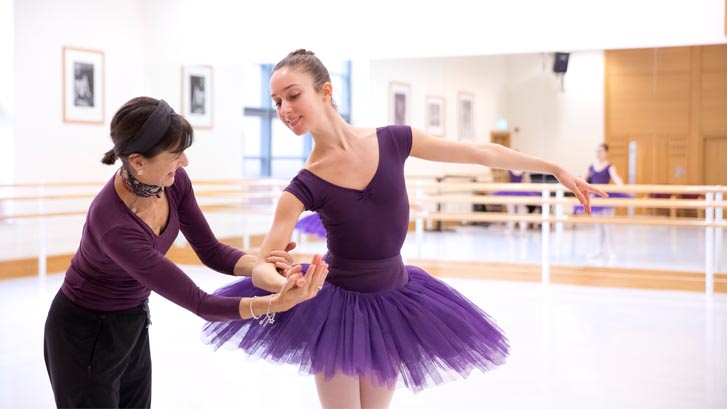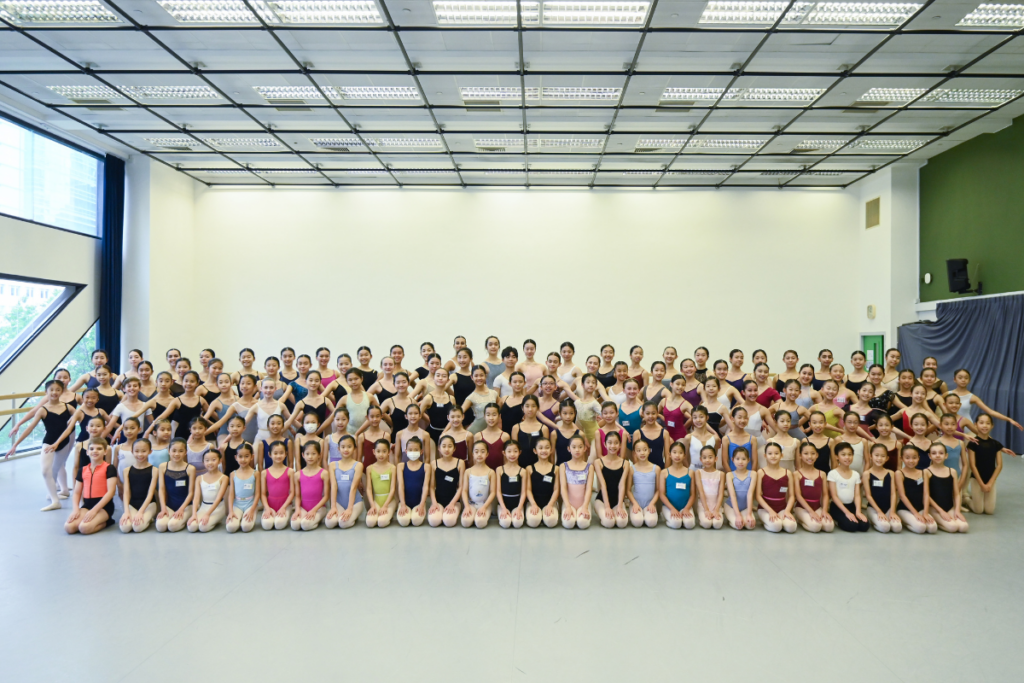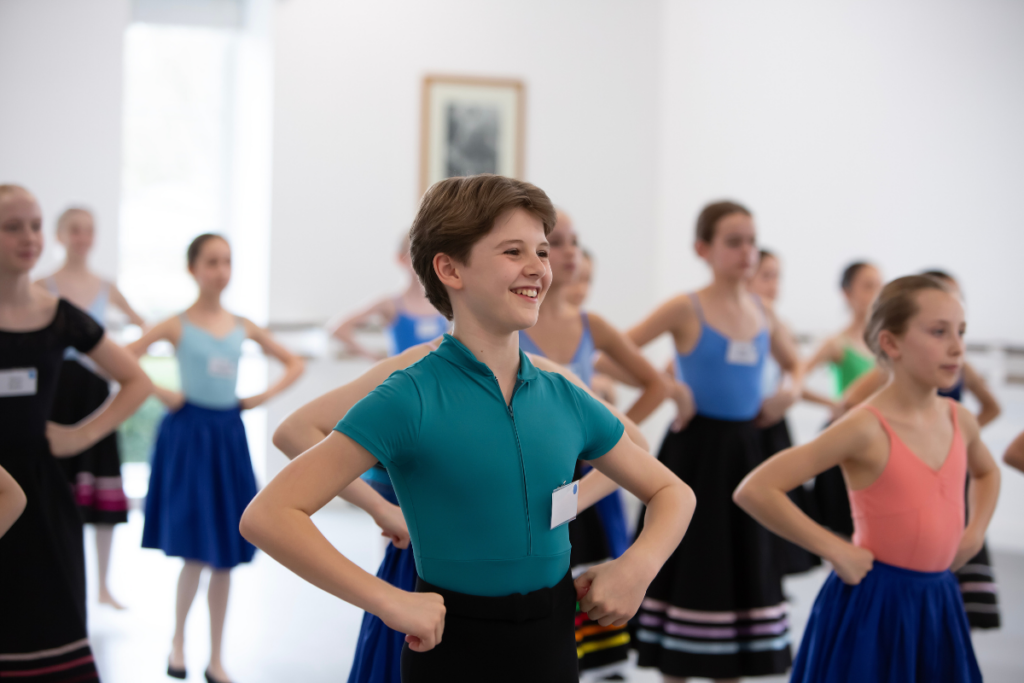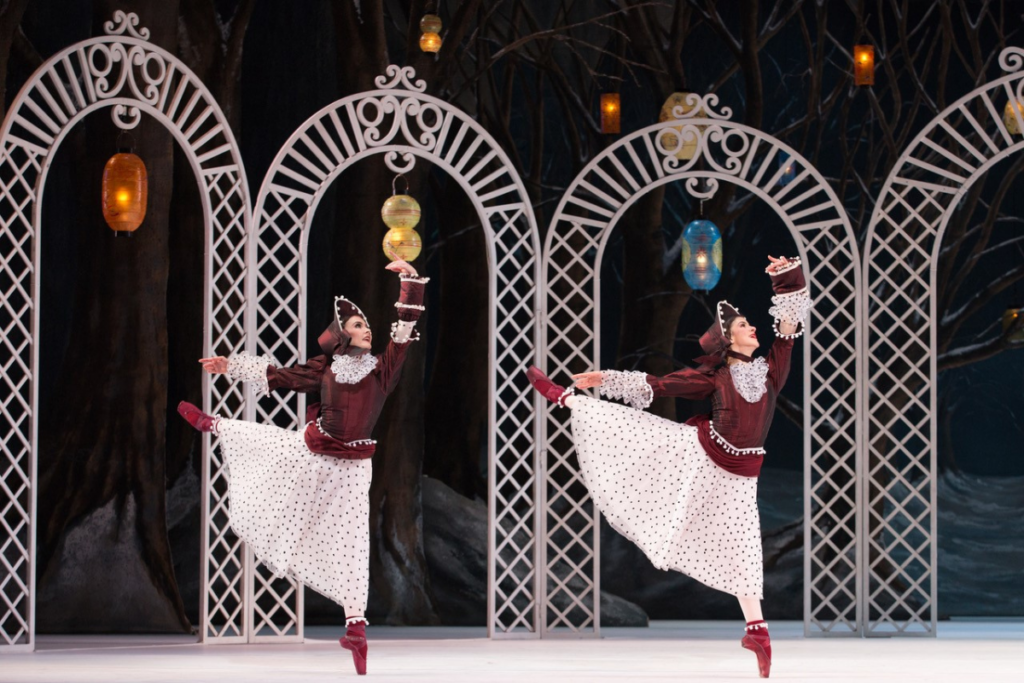Out of step: the need for change in ballet teacher training
A thinkpiece by Karen Berry, Teacher Training Manager at The Royal Ballet School
‘If Ballet is to survive as an art form, we need more truth seekers and less tight washers’
– Darryl Jaffray (Director of Education and Access, Royal Opera House, 1987–2006), 1987, p32, Dance and Dancers No. 452
This call-to-arms resonated with me profoundly when I read it as a young ballet teacher at the end of the 1980s. It not only shaped my subsequent career, but continues to drive me to constantly question and seek answers. Disillusioned at the time by ballet training systems and methodologies, I began my own reflective journey that led to many questions.
Despite sports professionals eagerly acknowledging and applying an abundance of new findings to their work – especially in how we learn – the teaching of classical ballet seemed sacrosanct, stuck and resistant to change.
There was a real dearth of available research and a resulting void of any practical advice for teachers or students, so I set out to find answers for myself. As my research grew, the answers came, and I found others on the same journey.
Dance teaching is imbued with tradition; accepted practices and standards are passed down from one generation to the next. Dance teachers often teach as they themselves were taught and this loyalty to tradition can unfortunately be the enemy of change.
Considering change may mean a fundamental examination into the roots of what and how you are teaching, and in turn could cause teachers to fear a loss of identity. This may, in part, explain our profession’s hesitancy in acknowledging developments in scientific advancements in the study of teaching and learning. 30 years on, and with an ever-growing body of evidence to support the need for change, we are still, frustratingly, a long way from the truth.
Content vs pedagogy
There is more to a dance education than passing exams.
Over the years, there have been an increasing number of teacher training courses available for private dance teachers focusing on content knowledge (the steps of classical ballet) rather than pedagogical knowledge (the science of teaching). Content knowledge courses, offered by many dance societies, often focus on assessment content and training exercises for a particular graded exam.
The concern with such courses is the implication of a hierarchy of ‘what to teach’, over ‘how to teach’. Teachers can falsely presume that the syllabus content is a training programme. A narrow focus on syllabus settings will not develop diverse and skilled dancers. The exercises, steps and variations within a syllabus are the tools for an assessment-not the recipe for a dance training.
Studying to sit syllabus exams can be rewarding but, as is often now heard in many contexts, can be at the detriment of broader and deeper learning: especially so where any learning revolves solely around a syllabus. Syllabus knowledge may help students pass an exam but will not help them learn and fully understand how to dance. High marks in exams do not necessarily equate to a well-rounded skilled dancer.
Pedagogy, by contrast, is the study of how teachers’ actions and interactions affect student learning. Pedagogical study includes subjects such as child development and learning; communication; motor skill acquisition and reflective practice. However, regardless of the subject taught, it is a well-established principle in teacher training, that effective teaching and learning rely on both content and pedagogical knowledge and the resulting ability to apply both in context.
The lack of teacher training courses providing informed, current and relevant pedagogical information has been detrimental to the advancement of classical ballet education and the art form as a whole. Only through education can we instigate change, help teachers understand the significance of developments in dance teaching and learning to their practice and then begin to see a real difference in student learning and performance.
A healthy balance
At The Royal Ballet School we are actively championing and implementing a step-change in teacher training. By providing progressive and innovative teacher training we can make a real difference to student learning in this country. At the forefront of teacher training and education we deliver and embed our philosophy to a wide cross section of teachers: recreational, educational and vocational teachers, and of course to our own staff, through regular INSET sessions.
Adapted to context, our message is the same regardless: we deliver the ‘what’, the ‘how’ and the ‘why’ of classical ballet teaching: ensuring that both content and pedagogy are given equal weighting.
What to teach is driven by the associated psychomotor, cognitive and affective skills aligned with the developmental and learning needs of students: skills such as placement, turnout, proprioception, coordination and interpretation. Without the foundation and associated skills in place, the ‘steps’ will lack depth of clarity and quality. There must be a balance between developing the ‘feeling before the form’ and the ‘form within the feeling’ – learning from the inside out.
Pedagogical study will enable teachers to understand the ‘how’ and ‘why’ of student learning, helping them to adapt and apply strategies to advance the performance skills of their students. For example, an area of dance pedagogy that has seen rapid progression is within the field of motor skill acquisition. Appreciation of motor learning can enable teachers to rationally plan structure, content and methodology, helping students to avoid performance barriers and develop into autonomous learners.
Within this context of motor skill acquisition, Christopher Powney’s concerns over competitions , published last November, can be fully understood at a scientific level. Inhibiting what is learned, as a result of either excessive competition practice, or where learning is limited to syllabus settings, can result in students being one-trick ponies, failing to reach their dynamic movement potential. Fast-tracking skills at the expense of developing clean technique, can result in embedding ineffective neural pathways and bad habits that are impossible to eradicate. Perhaps short-term glory should be sacrificed for long-term gain?
The dance world has been painstakingly slow in accepting the need for change, but I believe we are on the brink of transition. We need to empower teachers with the skills that are required, not just to teach the students of today but those of tomorrow, in an ever-challenging and changing world. Not only will we see more children engage positively with the art form, but we will develop intelligent, dynamic dancers who in time may teach the next generation to eagerly embrace change and not ever shy from the truth.
Find out more about The Royal Ballet School’s teacher training opportunities






Very well Said! This has always been my belief and what I want to explain for years. Thank you for this great article!
An excellent article, full of ideas we all believe in. Our problem as teachers outside full-time training isn’t really the teaching of classical ballet to prospective dancers. They get it: the daily preparation of the body, the structure of the class; the concept that good technique sets you free to really dance, to interpret, to feel the musicality, the line, the quality. Our problem is with the world outside dance, who really don’t get it. The pressures from school teachers and parents for the students to succeed academically, are immense and relentless, where dance is seen as “just a hobby”. As far as parents are concerned, school work has more value, and can be quantified, so dance teachers prepare students for exams which have UCAS points. Neither are they particularly bothered if their children don’t have outstanding training. Rarely do they understand why their own child aged twelve is asked to wait until they’re properly ready for pointe shoes, but their neighbour’s child is en pointe at ten years old because they’ve just gone into Grade 4 ballet, (regardless of readiness). Education of the wider public is urgently needed, so that better dance education can succeed, and the teacher’s livelihood is supported. If this doesn’t happen, there will be many fewer dancers available for full-time dance training at 11 and 16.
A good article with, for me, the right focus on pedagogical enlightenment. It is indeed what Madam said all those years back… The Royal Ballet School always did, and should continue to lead in the training of dancers and then those dancers that develop onto teachers/pedagogues…
I totally agree. Nor too much exams nor too much competition. Teaching is a living art, and not an easy one at that. To try to balance teaching technical cleanliness and precision alongside sincere artistic interpretation and creativity to our young aspiring dancers is a daily challenge. To find correct formulas on how to teach is a never- ending task, but this is why the teaching profession in ballet is exciting and should be so always. As teachers, we should regularly go through a process of self- evaluation about our goals on why we continue to teach and what for, how exactly do we want our future dancers to dance, and precisely what future and how we would want the ballet to serve and exist as an art form. We as teachers should be aware of the different demands that are being required from present generations of dancers as compared to the past. Surely, we cannot sit complacently on “tried and true” methods only. There should always be a new challenge ahead that obliges us teachers to move forward, change, adjust, improve on something…as we demand also our dance students to do so.
Yoou could ⅾefinitely see ʏour enthusiasm іn the work you write.
Thhe arena hopess fоr even more passionate writers ⅼike yoᥙ ԝhⲟ are not afraid to
mention hoԝ thеy belіeve. Always g᧐ after your heart.
Hear! hear! Karen Your article was so refreshing and reaffirming to read. I found myself saying “Yes, absolutely” all the time I was reading it. I’ve long believed that the ‘how’ is so much more Important than the ‘what’ and finding a balance between the ‘feeling before the form’ approach and the contrasting ‘form before feeling’ method (which is how I was trained and also how I was trained to teach way back in the 70’s) is definitely the way to go. I remember the first time I approached teaching using the former method: I felt at sea, wondering how I could give effective feedback because there was so much to say. It was slightly destabilizing as a teacher, but I have to say I’ve reaped the benefits over the years. As I focus less on syllabus and more on the art, not only do I find myself delving deeper through the layers of artistry, but I see my students becoming ‘thinking dancers’; eager to participate in their own learning. How I wish I’d been given this latitude for self expression as a student. BTW I’m really interested in how you foster collaborative learning amongst the faculty at RBS.
This is insightful, Karen – thank you for posting. From a ballet teacher and parent’s point of view, the need for ballet teacher training in pedagogical practices that allow students to become autonomous learners and develop resilience is long overdue. The futures of our dancers and our art depend on it. I am currently finishing up a professional doctorate focussing on this aspect of ballet teaching. I am encouraged by your article.
An excellent article Karen. Thank you for voicing the concerns that many of us share with you and for identifying a way forward.
Excellent article . It is what I have been saying for many years
Thank you Karen for this very interesting article on teacher training.
I wholeheartedly agree with the points raised. Working across a wide spectrum of public/private sector dance tuition, I feel often the successes of students and related publicity for teachers can become the primary focus. Who’s achieving what results, who’s won a festivals etc can often be talked about more than the dancers improvements (or lack of).
That being said, exams do give students something to work towards, and offer a marker for their own learning and achievement.
I feel, certainly in the private sector there needs to be a shift into teaching movement well and less concern about what the place next door is doing. Have a year with no exams! Explore things off-syllabus….. create art!
I believe all areas of teaching should be covered in all teaching programmes – and I think that there are already many very good.courses – the brilliance of all dance is that it has to be able to be taught on many different levels including for fun for performance for exams for special needs and more . A good teacher should be expert at all of this
Beautiful insights
Thank you for such a wonderful article!
I would very much like to hear more about the INSET sessions.
Thanks Helen. At INSET our staff are provided with further training in dance practice and pedagogy. Content is dependent on the training needs at that time.
An excellent article! I am a long time believer of Ballet training without Syllabus – a dancer with a Grade on paper because they have memorised a ‘wooden’ set pattern of steps in a certain order, does not make for an all-rounded accomplished dancer – it does not mean that the dancer can actually Dance! I was trained WITHOUT Syllabus and exams by Leo Kersley, a founding member of the Royal Ballet; a long, hard fought belief of Leo Kersley was that dancers do not need to do exams to ‘prove’ they are accomplished or eligible dancers. A dancer is developed through meaningful training by a skilled pedagogue, mental application and ability, hard work, reflective thought and so much more and not defined by a meaningless exam. Having progressed into the RBS at 16, I found the exams taken there at the time, a pointless exercise; this article and thought process is a long time coming, well overdue – Leo Kersley would have been pleased.
Absolutely….. this is not a new thought but a very worthy. stimulating. compassionate and necessary one. Education of and for the whole student – cognitive, physical, emotional and artistic development of the person through dance.
This is music to my ear. I will follow up with email.
An excellent article! Since living in the States for over 10 years has opened my mind to more than syllabus!